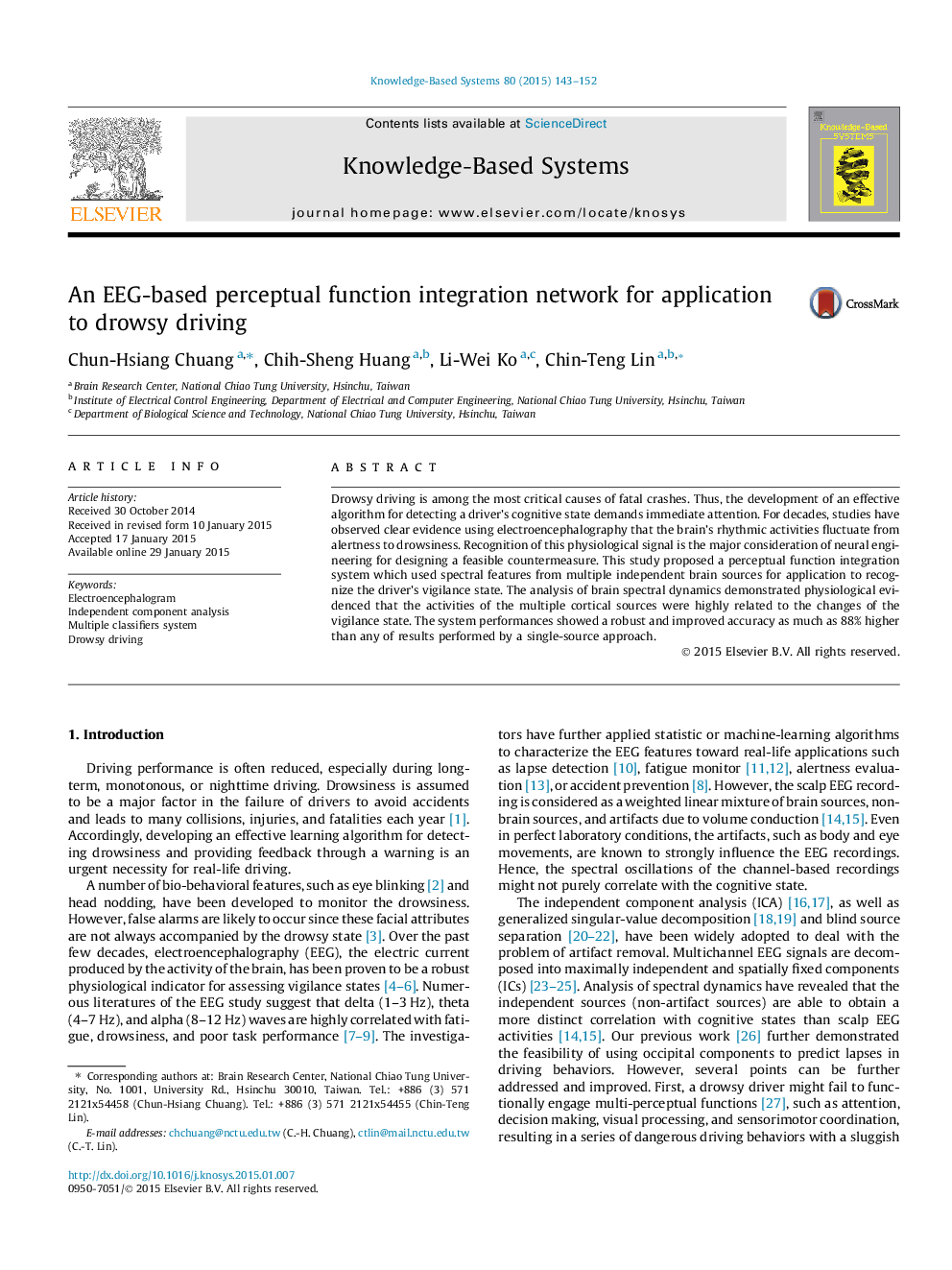| Article ID | Journal | Published Year | Pages | File Type |
|---|---|---|---|---|
| 403516 | Knowledge-Based Systems | 2015 | 10 Pages |
Drowsy driving is among the most critical causes of fatal crashes. Thus, the development of an effective algorithm for detecting a driver’s cognitive state demands immediate attention. For decades, studies have observed clear evidence using electroencephalography that the brain’s rhythmic activities fluctuate from alertness to drowsiness. Recognition of this physiological signal is the major consideration of neural engineering for designing a feasible countermeasure. This study proposed a perceptual function integration system which used spectral features from multiple independent brain sources for application to recognize the driver’s vigilance state. The analysis of brain spectral dynamics demonstrated physiological evidenced that the activities of the multiple cortical sources were highly related to the changes of the vigilance state. The system performances showed a robust and improved accuracy as much as 88% higher than any of results performed by a single-source approach.
